When was the last time you looked at your emergency pantry? Did you stock it with enough sources of protein? There’s more to food storage for emergencies than stocking up on bread, grains, and other fillers.
Contrary to popular belief, having a lot of food on hand is only half the battle. After all, you still need to be in peak condition during emergencies. No macronutrient will allow you to recover from disease, build lean tissue, and stay sharp better than protein.
The benefits of protein are well-documented, and getting too little of it will lead to health issues. According to Web MD, protein deficiency is the culprit behind losses in balance and strength — what you need for physically demanding tasks.
In short, protein — whether it is emergency meat in food storage or something plant-based — is a must. Protein may be widely available nowadays, but you need to be a little picky. If you are serious about stocking up on high-protein food, you need options that:
- Are easy to find
- Affordable
- Contain other nutrients aside from protein
- Can tolerate at least a year of storage
Read on to learn more about foods that fit the above-mentioned criteria.
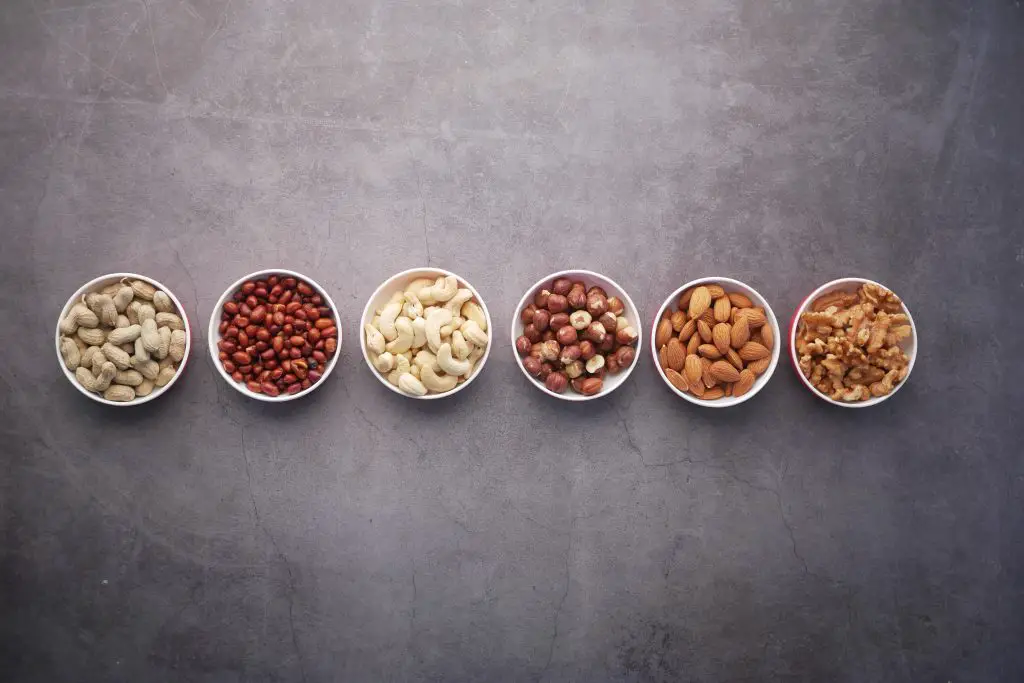
1. Nuts
Nuts are some of the most easily accessible protein sources today. A short trip to your local grocery store will prove an easy way to acquire high-fat high protein kernel seed.
The protein content in nuts and their availability make them rank high on our list of high-protein bug-out foods. According to the United States Department of Agriculture, peanuts contain roughly 20 grams of protein per serving.
If you want to get more protein, look beyond salted peanuts. Healthline enumerates the following high-protein nuts in one of its articles:
- Walnuts
- Almonds
- Pistachios
- Cashews
- Pine nuts
The best part of having peanuts in your emergency food storage is that they are inexpensive and easy to come by. More importantly, nuts, regardless of variety, are dry. This means that you can store them for a long time, and they would still be edible.
Nuts are also powerhouses of several micronutrients. High in calories, nuts also abound with vitamins and other micronutrients including:
- Zinc
- Magnesium
- Vitamin E
- Copper
- Manganese
- Fiber
- Phosphorus
In short, nuts are complete, making them an essential addition to your food storage for emergencies.
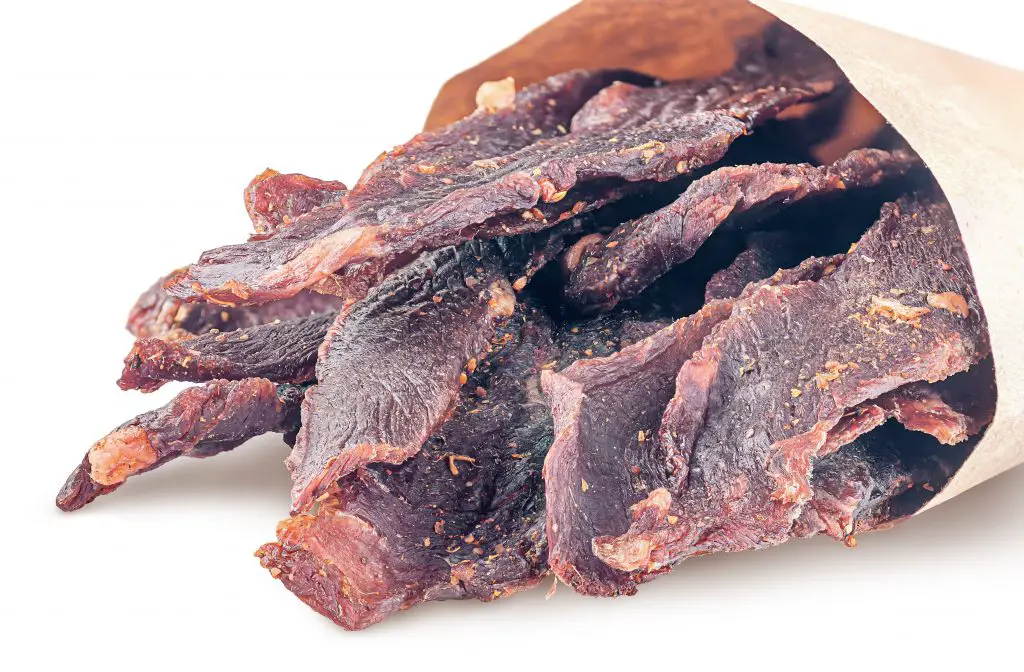
2. Beef Jerky
Beef jerky is more than a quick snack you pick up at a local gas station. Beef jerky is convenient, compact, consumable on the go, dehydrated, and loaded with protein.
The average serving of beef jerky is usually 100 grams. At 100 grams, you can expect to soak in at least 30 grams of protein. 33 grams helps you meet up to 70% of your protein requirements for a meal.
A pack is high in calories and fat as well. According to the USDA’s food calculator, 100 grams of beef jerky can provide you with 410 calories. This is roughly a fifth of the calories an average person would need in a day.
What is more, you will find at least 26 grams of fat in one serving. This might sound like a cause of concern if you have heart issues. However, high-fat content makes food stay in your digestive tract longer. As a result, you will feel full for much longer compared to if you ate the same amount of carbs.
The sodium content of beef jerky is estimated to be around 2,000 milligrams. The high-sodium content does two things:
First, it allows you to store beef jerky for at least a year. Sodium is a potent preservative, which is why people salt leftover food to increase shelf life.
The second benefit of high-sodium content is less obvious and relates to digestion. Beef jerky is a rich source of protein. Of the three macronutrients (i.e., carbs and fats), protein is the hardest to digest. It requires a lot of water in the body, and this is why high-protein diets can dehydrate you.
Sodium allows water retention, according to an article in Medical News Today. This means that with a lot of sodium, your body will hold on to a lot of water. With beef jerky, you can still consume it and not fear getting dried up.
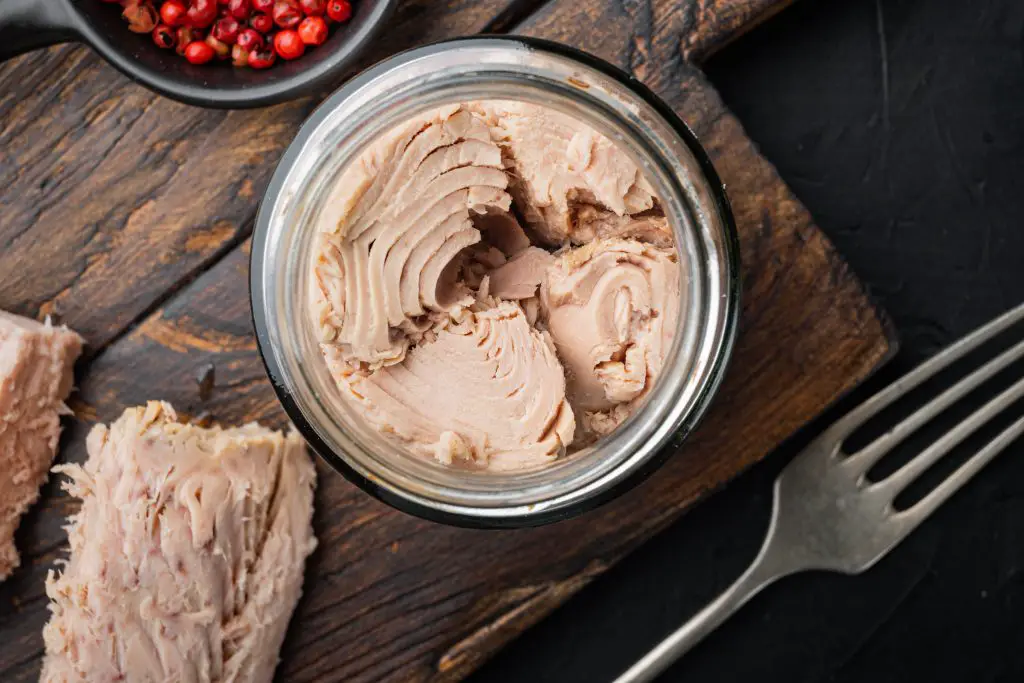
3. Canned Tuna
As mentioned earlier, you need an easily accessible protein source that offers more than protein during an emergency scenario. Indeed, you may get by on plain protein sources like dried meats and nuts. Nonetheless, your emergency meat food storage needs to contain some nutrient-dense options that pack a potent micronutrient punch.
When it comes to high-protein nutrient-dense food, you need to look seaward. Tuna is an excellent source of protein, making it a favorite amongst followers of the Pescatarian diet. A four-ounce serving already delivers nearly 30 grams of protein — even in canned form, according to the Web MD.
Canned tuna is prized for more than its protein content. Tuna is a type of fatty fish alongside salmon and mackerel. As a fatty type of fish, tuna abounds with Omega-3, a fatty acid that is essential for heart and brain health.
Canned tuna also contains healthy amounts of vitamin B6 and cobalamin. These micronutrients promote nervous system function.
Also among the nutrients, you can find in a can of tuna are:
- Iron
- Magnesium
- Potassium
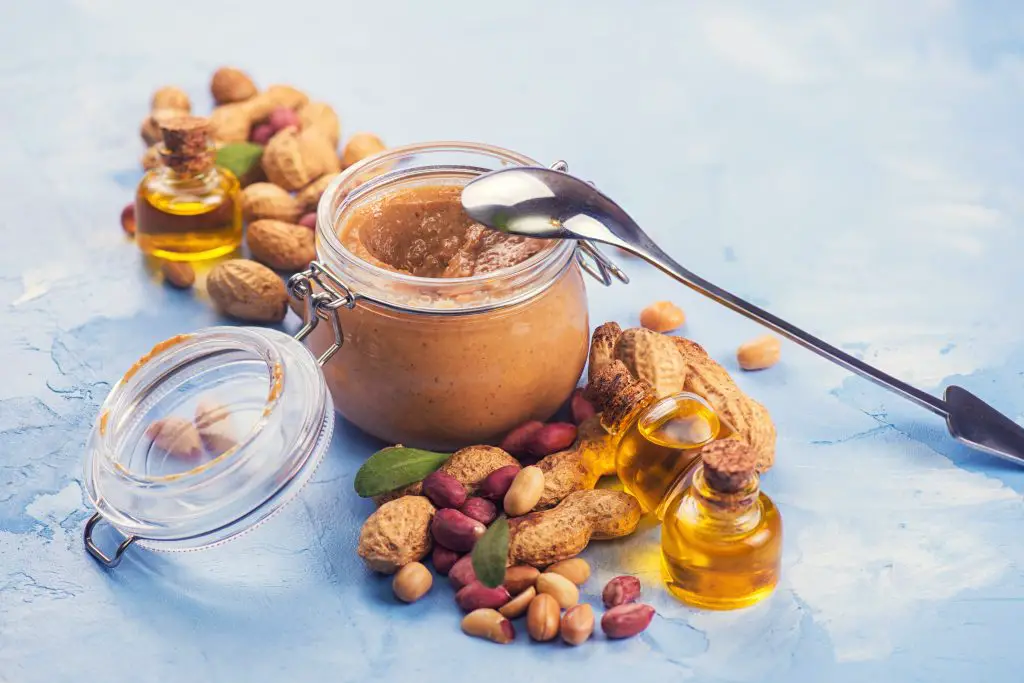
4. Peanut Butter
Perhaps, this may have surprised you. Peanut butter is a condiment and spread enjoyed by millions across the country. With its packaging, taste, and non-perishability, we would be remiss not to include this high-protein food in the list.
Peanut butter does more than add taste to two slices of whole wheat bread and crackers. A tablespoon of peanut butter contains six to seven grams of plant-based protein.
Seven grams may not sound like a lot of protein. However, when you consume tablespoons of peanut butter along with other protein-packed foods, it can add up. You can even meet up to 50% of your protein requirements with peanut butter, according to the USDA.
Peanut butter is also an excellent addition to your list of food for emergencies because of its fat content. With a tablespoon providing 50 grams of fat, peanut butter can keep you full for a long time. The best thing about the fat in peanut butter is that most of it is unsaturated fat. This means that heart and blood vessel problems are the least of your worries, even if all you consumed was peanut butter.
Because of its source, peanut butter can also provide you with your daily dose of:
- Magnesium
- Vitamin E
- Dietary fiber
- Some carbohydrates
If you want to get the most protein out of peanut butter, opt for the crunchy or chunky variety. These varieties have more protein compared to creamy peanut butter.
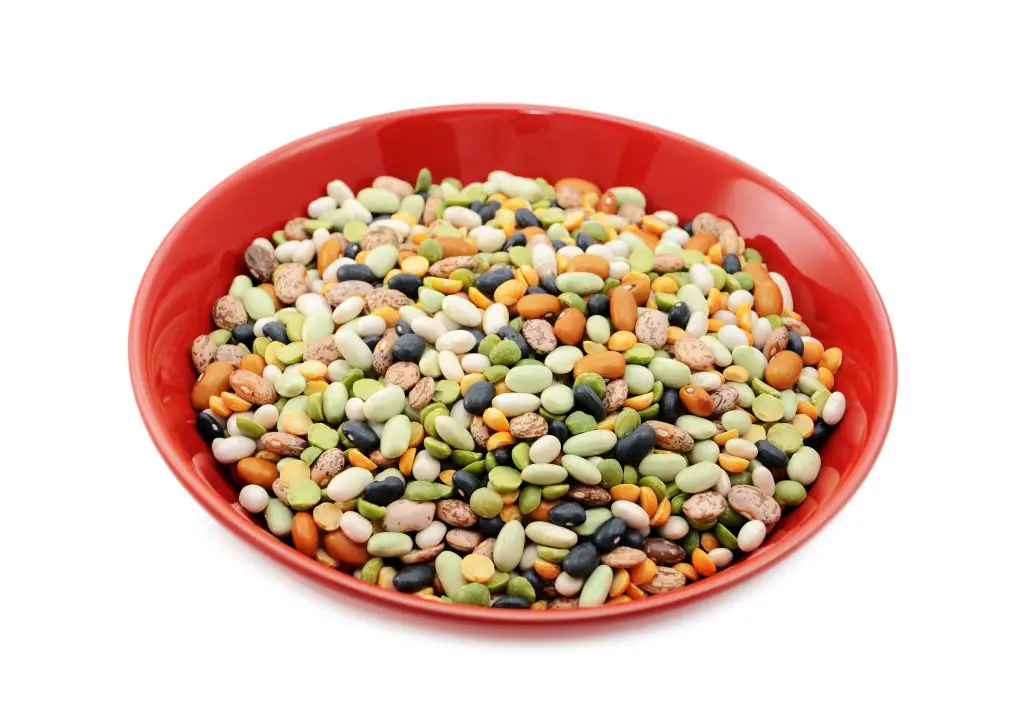
5. Dried Peas and Beans
Being a vegan does not bar you from getting the right amount of protein into your system. Other than nuts and peanut butter, you can include dried peas and beans in your emergency food storage.
Peas and beans are excellent sources of plant-based protein. Even a few spoonfuls of either gives you eight grams of protein, according to Healthline. Peas and beans can also be dehydrated and added to nuts for quick on-the-go rations when you need to take food with you.
Whatever peas and beans lack in size, they make up for with their micronutrient content. Beans are loaded with vitamin B complexes that help your nervous system fire on all cylinders. In particular, the following abound in peas, beans, and other legumes:
- Thiamine
- Folate
- Riboflavin
Peas are also excellent sources of Vitamin K, a vitamin for nerve health and blood clotting. Other micronutrients like Magnesium and vitamin E are also present in beans.
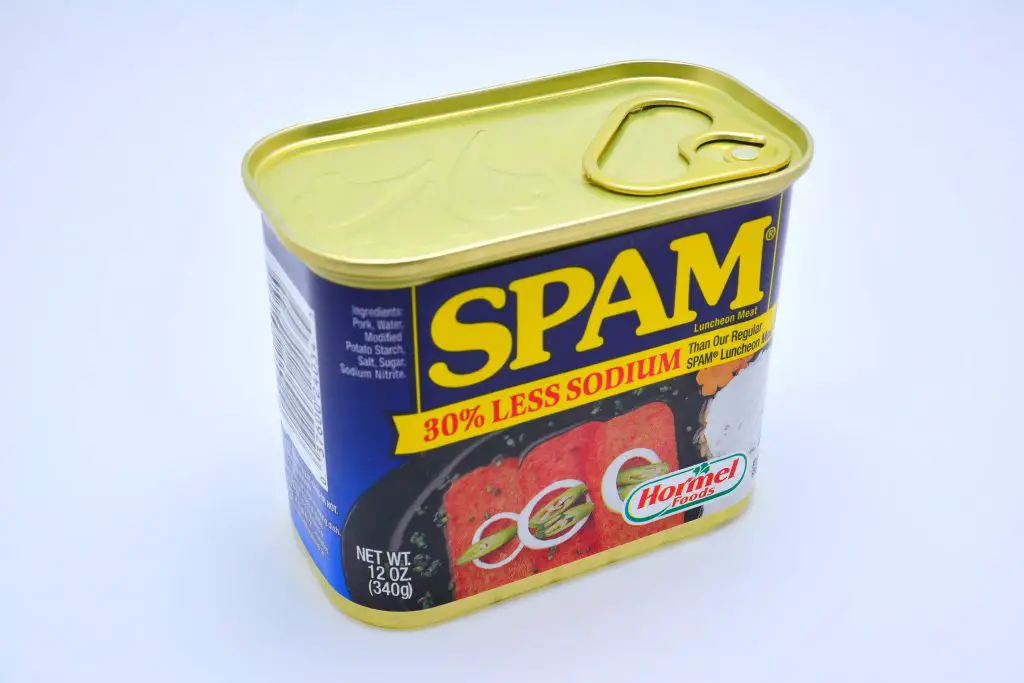
Bonus #6 – SPAM
When you are looking for food to store for an emergency, SPAM is a great option. It has a long shelf life, so you can keep it in your pantry for a long time. It’s also cheap and it doesn’t require any special preparation, so it’s perfect for times when you don’t have a lot of time or money. And best of all, SPAM is packed with protein, is affordable, and easy to find; so it will help keep you going during a crisis.
Before You Start Prepping
Having enough high-protein food in your emergency food storage will go a long way in ensuring your nutrition during unforeseen circumstances. To maximize your chances of being well-fed and making it through an emergency, here are some tips that can help:
Do Not Neglect Carbohydrates
Carbohydrates are also important in a person’s diet, barring metabolic conditions like type 2 diabetes. Other than “filling” up your high-protein meals and fueling you, carbohydrates are a must to get the most out of protein.
One study done in 2013 found that carbohydrates alongside a protein-rich food maximized protein absorption. In other words, by eating carbs with your protein, you can absorb nearly all of the protein you ingest.
Stay Away from Dented or Bloated Cans
When buying canned food like tuna, inspect the cans for dents and irregularities in shape. These indicate the presence of a bacteria known as Clostridium botulinum.
Clostridium botulinum causes gastric distress and diarrhea — two unwelcome conditions when you are heading to your nearest evacuation center.
Pack Enough Water
As mentioned earlier, protein takes the most metabolic water to digest. To prevent dehydration while eating high amounts of protein, ensure that you have enough water on hand.
Include More Than Meat in Your Food Storage for Emergencies
Meat has long been considered the go-to food for anyone looking to meet their protein requirements. However, there is no need to limit yourself to whatever you see in the butcher shop.
While meats are valuable for loading up on protein, not all will lend themselves well to emergency meat food storage. This is why you need to stick to protein sources that are easy to get, have long shelf lives, and offer other nutrients.
Keep an open mind when it comes to your protein sources, and you will stay nourished whatever cataclysmic event comes your way.
